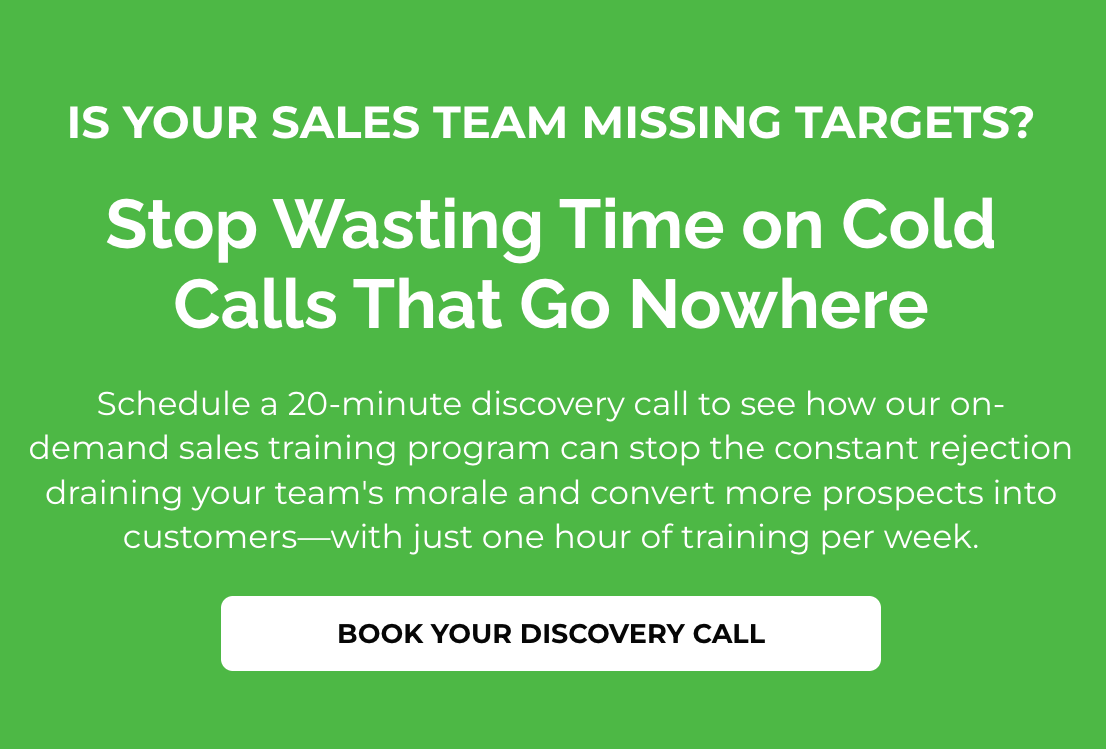Outbound Sales Cadence Examples

Outbound Sales Cadence Examples:
Best Practices for Inside Sales Cadences to Work
Outbound sales cadence examples typically focus on action steps based on spacing.
Sales Cadence Example:
Day 1: CALL/VOICEMAIL/EMAIL #1
DAY 2: EMAIL #2
DAY 3: CALL/NO VOICEMAIL
DAY 5: EMAIL #3
SAAS sales software tools such as Outreach, SalesLoft, and Xant (Formerly InsideSales.com) have capitalized on a Billion-dollar industry centered around helping inside sales teams (and their managers and Directors) set-up customized outbound sales cadences for their SDR’s, BDR’s and ISR’s to follow.
The primary factor for any sales cadence to work is “action.” The more touches one has, the higher the chances will be that they will land a sale. Most inside sales managers have lost sight of the “reason” a sales cadence works (the more at-bats you have, the higher chance you will have at hitting the ball) and instead have become obsessed with finding the perfect sales cadence.
Inside sales teams are getting too hung up on looking for that “perfect” formula or combination of “phone/voicemail, phone/no voicemail, email, social touch” that will generate the best results. They search in vain because the simple fact is, IT DOES NOT EXIST.
Pretending that prospects will conform and buy if a sales rep calls at this time and email at this many days after their last phone call, voicemail, email, or social touch is delusional at best. That is setting one’s self and their team up for failure with regards to expectations because there are too many factors that come in to play to allow what would be considered a universal “best outbound sales cadence” that would work across the board.
Inside Sales Managers are driving themselves crazy, stressing out over finding the perfect solution and continue to “tinker” with their cadence, sometimes on a monthly or even weekly basis, when the sales numbers are not meeting expectations.
Replace Sales Cadence Stress with Simplicity
I have two solutions to share that will make things simple, effective, and less stressful.
Here are two real-world, proven old school cadences that will work hand-in-hand with some of today’s best new school SAAS sales tools. Both cadences focus on output rather than spacing.
Outbound Sales Cadence Example #1
The first one is simple: Sales reps have 60-days to make significant progress with this lead/account, or another sales rep can take the lead over on the 61st day.
This system was created by the best sales manager I ever had and was in place when I worked for duPontRegistry as an inside sales rep cold calling on luxury auto dealers. The goal was to get the GM on the phone and close them on having their inventory listed on the duPontRegistry website (think AutoTrader for the high-end market)
Once a sales rep had a lead in their name, the clock was ticking. They had 60-days to move the needle significantly, or another sales rep could take the lead over and put it in their name, and then they had 60-days to do the same.
I love several things about this format.
- It places the urgency on the sales reps, not the manager.
- Accountability. Soft sales reps will not survive this type of environment, and only the strong will survive. Don’t you want the strongest team possible to win out over your competition?
- It’s easy to manage. CRM’s such as SalesForce easily state the facts with time-stamped data-entry. Furthermore, if the sales rep did not enter their last conversation, and the 60-days passed, and another sales rep took over the account and closed it, too bad.
Outbound Sales Cadence Example #2
Back in the day, when I first got into inside sales, I worked for a company that advertised in PC Magazine, and the leads would come via a card deck that was mailed back in with the prospect’s information…
The company would take those card decks, enter the lead info, and then print them out on an 8.5 x 11 sheet of paper, with two columns, five leads per column.
We had 80+ inside sales reps that would walk over to the table, grab a few sheets of paper (leads), go back to their desk, and start dialing.
It did not take long to realize that leads were duplicated randomly throughout the sheets of paper on an ongoing basis.
A common theme the sales reps would hear (loudly) from prospects is, “how many times are you people going to call me?” even if it was the first time that that particular salesperson called that particular prospect… so we knew the company was recycling the leads.
From a business perspective, it was brilliant (keep in mind this is before CRM existed to the level it does today)
The upside was, prospects were getting called until they answered the phone. This was the ultimate cadence. It was volume.
So how do you combine what worked in the past (volume) and maximize its effectiveness with today’s sales tools to get the best results without stressing looking for that perfect cadence?
Here’s how.
Instead of focusing on spacing, focus on volume.
Step one: The sales leads are pre-screened/qualified to be considered suspects. It is essential only to put leads that match the ICP (Ideal Customer Profile) into your cadence.
Step two: Once a list of pre-qualified leads is created that matches your ICP, rather than focusing on spacing of each touch, concentrate on rotation.
For example, lead #1 gets called. If you get voicemail, leave (or auto-drop) your voicemail message, send your email and call the next lead on the list. The first lead gets dropped to the end of the line. So if you have 500 leads (as an example) on your targeted list, the first lead becomes number 500, the second lead now becomes the first lead, and so on.
If we go back to a baseball analogy, you’re the pitcher, and you are cycling through the lineup.
Keep in mind as sales calls are made, prospects will become clients, and they are taking out of the lead list. Other prospects will want not to be called again, and other leads may be interested, but timing is not right, and a follow-up call at a later date is needed.
This means the lead list will have natural attrition, and this is why it will be essential to research and build a robust pre-qualified list to get started, and then once a week schedule time to “prospect” and add back new leads to replace the leads that get removed.
I checked in with Aaron Browning of FrontSpin, and he confirmed his SAAS sales software solution could easily handle this blended sales cadence of old-school mixed with new school.
He said, “yes, it is absolutely possible to use our system to assign a certain amount of leads that assign the leads to be called in ROTATION automatically for the sales rep. For example, if you have 500 leads, make your first call on the list, it goes to voicemail, you auto drop or leave a personal VM, send an email, and now that lead goes to the back of the list.”
This type of sales cadence puts the focus on what matters most, volume, and removes the headaches of trying to create or find the perfect formula, to which there is none.
Now, mix in the first example of the “60-day progress rule” with the rotation cadence strategy and watch your sales numbers go up.
– Michael Pedone
Michael Pedone teaches inside sales teams how to pick up the phone and close business. He is the CEO/FOUNDER of SalesBuzz.com – An online sales training company.
Salespeople don’t need a pep talk.
They need a plan; A sales plan.
A repeatable step-by-step strategy that can be executed with ease and delivers high results.
A solution with sales techniques that eliminate objections before they happen, and removes outdated tactics that create objections.
Register your team now to our online sales training program, by Michael Pedone and they will learn:
- How to Warm Up and Close Cold Leads
- Eliminate “No, Thanks”, “Not Interested” & “We’re All Set” Responses
- Neutralize Gatekeepers & Get Voicemails Returned
- Ask Engaging Questions Instead of Probing
- Improve your Qualifying Skills
- Give Stellar Presentations & Handle Objections
- Close Follow-up Calls and Get Targeted Referrals
- How to Set & Achieve Your Toughest Sales Goals
- Improve Your Time Management Skills
Duration: 1 hour per week for 8 weeks
Where: Online @ your desk, conference room or home
Presenters: Michael Pedone

